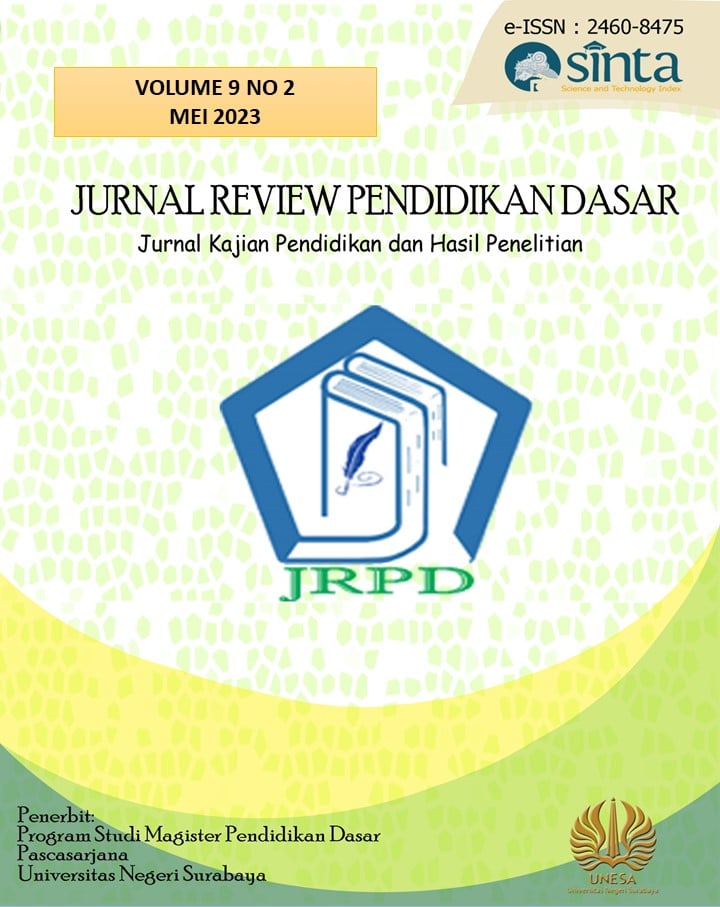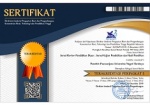KEBERTERIMAAN MEDIA MULTIMODALITAS BERBASIS WEBSITE DALAM PERSPEKTIF GURU: TINJAUAN THE UTAUT MODEL
DOI:
https://doi.org/10.26740/jrpd.v9n2.p104-116Keywords:
Keberterimaan,, Perspektif guru, multimodalitas, UTAUTAbstract
Perkembangan teknologi berdampak pada model pembelajaran saat ini, terutama konsep-konsep baru dalam penyampaian materi pembelajaran. Namun demikian, guru masih belum sepenuhnya menggunakan media yang mendukung dengan perkembangan saat ini. Penelitian ini bertujuan untuk menggambarkan keberterimaan guru terhadap media multimodalitas berbasis website. Pendekatan yang digunakan adalah Tinjauan The UTAUT Model, yang mengidentifikasi faktor-faktor yang mempengaruhi adopsi teknologi. Penelitian ini melibatkan guru-guru sebagai responden utama sebanyak 96 guru di Kabupaten Karawang dengan menggunakan kuesioner untuk mengumpulkan data, serta menggunakan Software SmartPLS sebagai alat untuk menganalisis data. Dalam penelitian ini, peneliti menganalisis empat faktor utama dalam The UTAUT Model, yaitu kegunaan yang dirasakan, kemudahan penggunaan, norma sosial, dan keyakinan perilaku. Hasil penelitian ini memberikan wawasan yang lebih mendalam mengenai faktor-faktor yang berpengaruh terhadap keberterimaan guru terhadap media multimodalitas berbasis website. Temuan ini dapat membantu dalam merancang strategi yang tepat untuk mempromosikan penggunaan media multimodalitas dalam konteks pendidikan.
Keywords: Keberterimaan, perspektif guru, multimodalitas,UTAUT.
References
Akhyak. (2023). MEDIA INOVASI PEMBELAJARAN. Akademia Pustaka.
Algebra, T. H. E., Factor, O. F., & Modeling, S. (1981). Erratum: Structural Equation Models with Unobservable Variables and Measurement Error: Algebra and Statistics. Journal of Marketing Research, 18(4), 427. https://doi.org/10.2307/3151335
Chang, H. Y., Binali, T., Liang, J. C., Chiou, G. L., Cheng, K. H., Lee, S. W. Y., & Tsai, C. C. (2022). Ten years of augmented reality in education: A meta-analysis of (quasi-) experimental studies to investigate the impact. Computers and Education, 191(May), 104641. https://doi.org/10.1016/j.compedu.2022.104641
Karda, R., Delhove, J. M. K. M., Buckley, S. M. K., Rahim, A. A., Rocha-Ferreira, E., Perocheau, D. P. B., Ng, J., Mckay, T. R., Hagberg, H. H., Waddington, S. N., & Johnson, M. R. (2015). 134. Generation of Light-Emitting Somatic-Transgenic Mice for Disease Modelling of Hypoxic Ischaemic Encephalopathy. Molecular Therapy, 23(June 2013), S55. https://doi.org/10.1016/s1525-0016(16)33739-x
Downloads
Published
How to Cite
Issue
Section
License
Copyright (c) 2023 Jurnal Review Pendidikan Dasar : Jurnal Kajian Pendidikan dan Hasil Penelitian

This work is licensed under a Creative Commons Attribution 4.0 International License.
 Abstract views: 449
,
Abstract views: 449
, PDF Downloads: 433
PDF Downloads: 433




